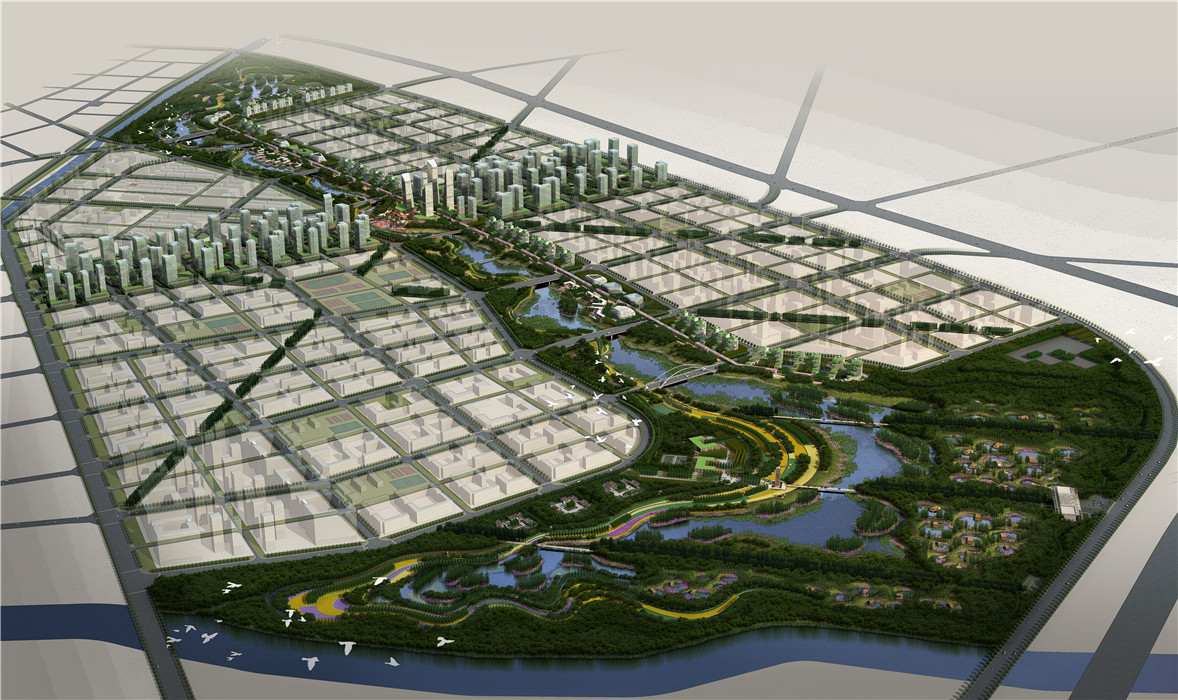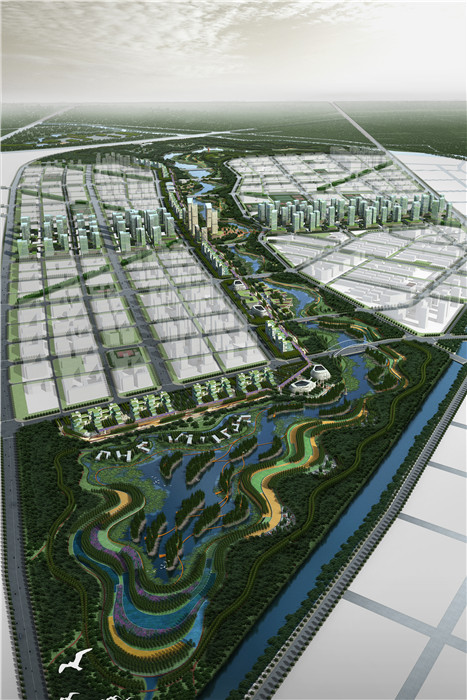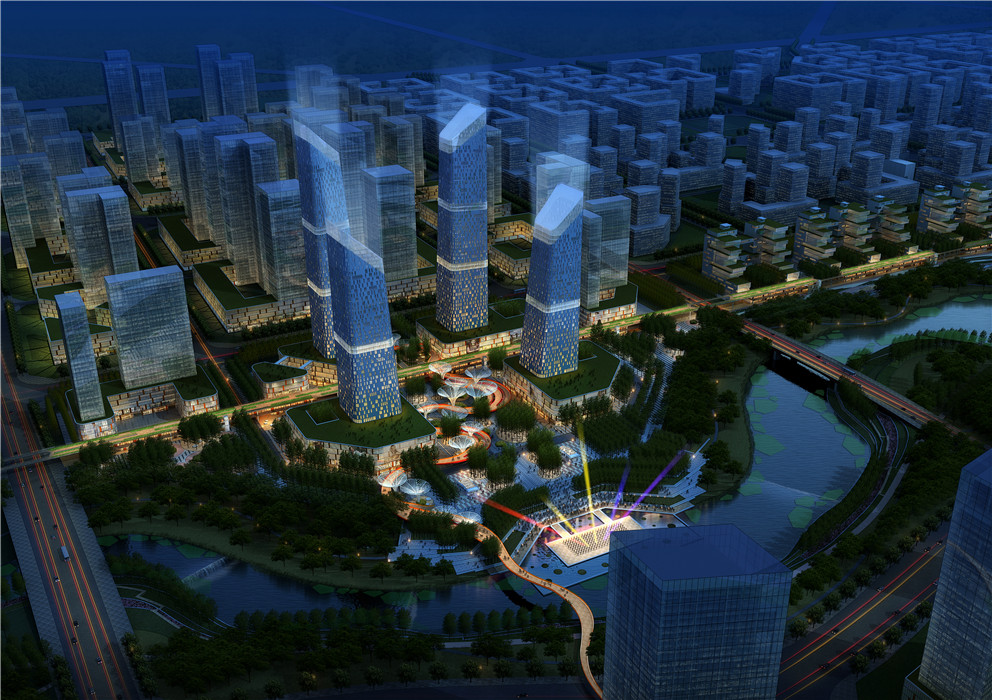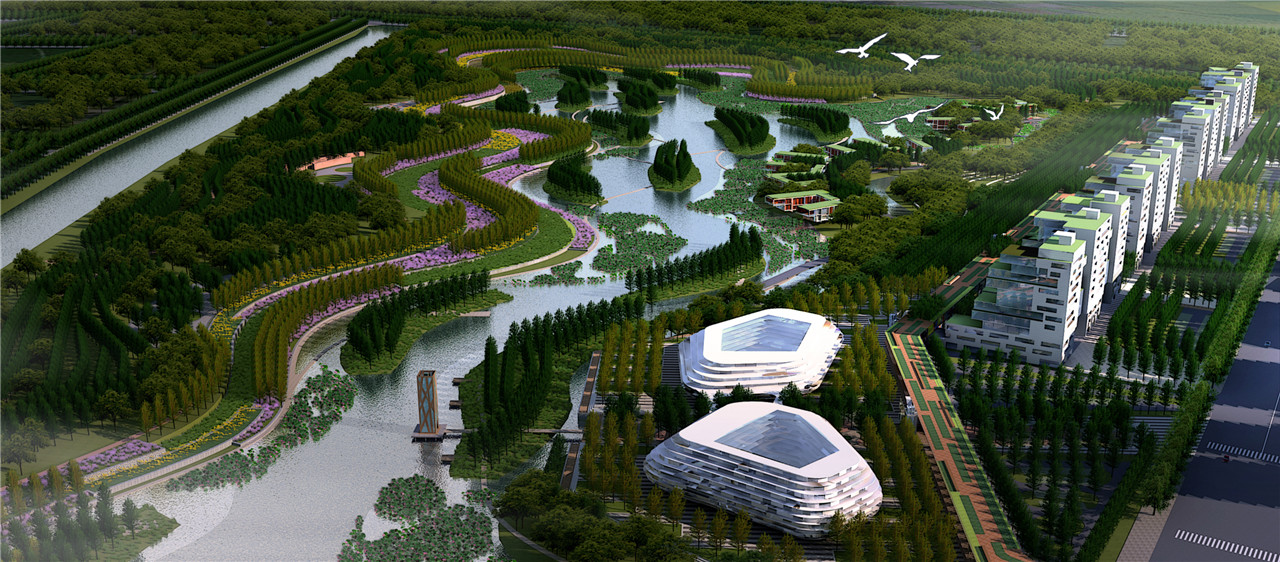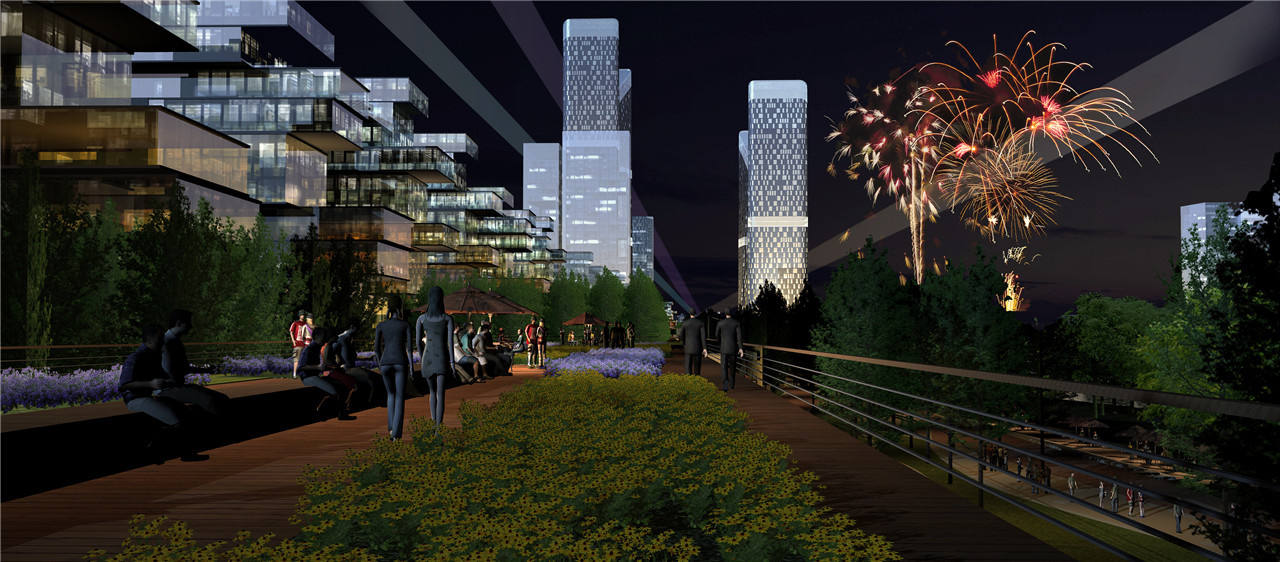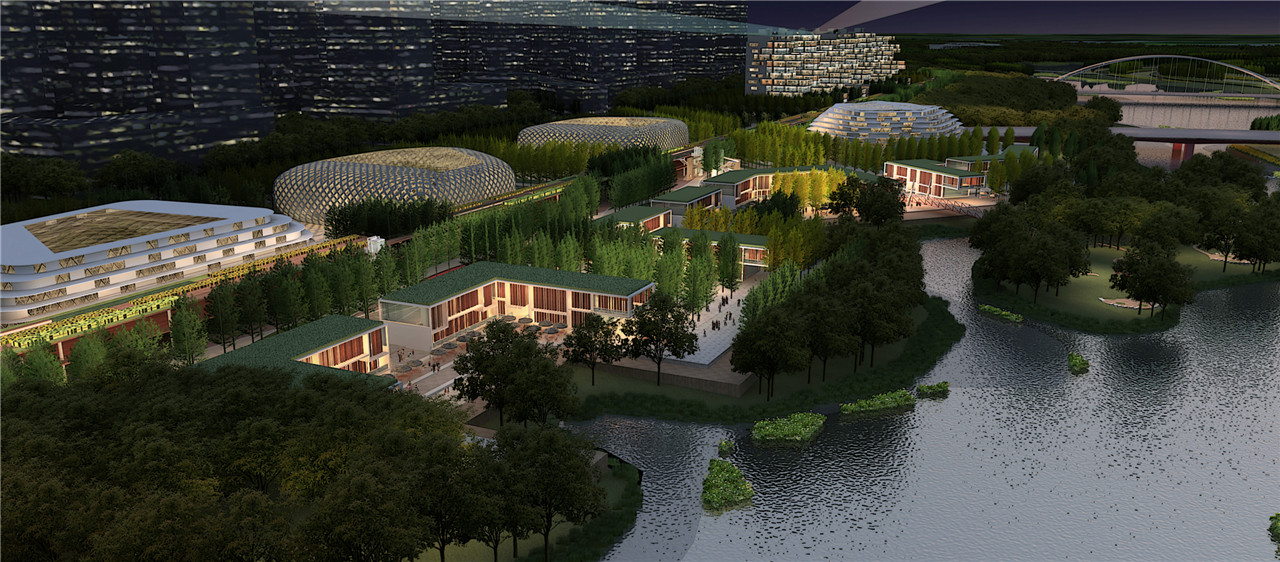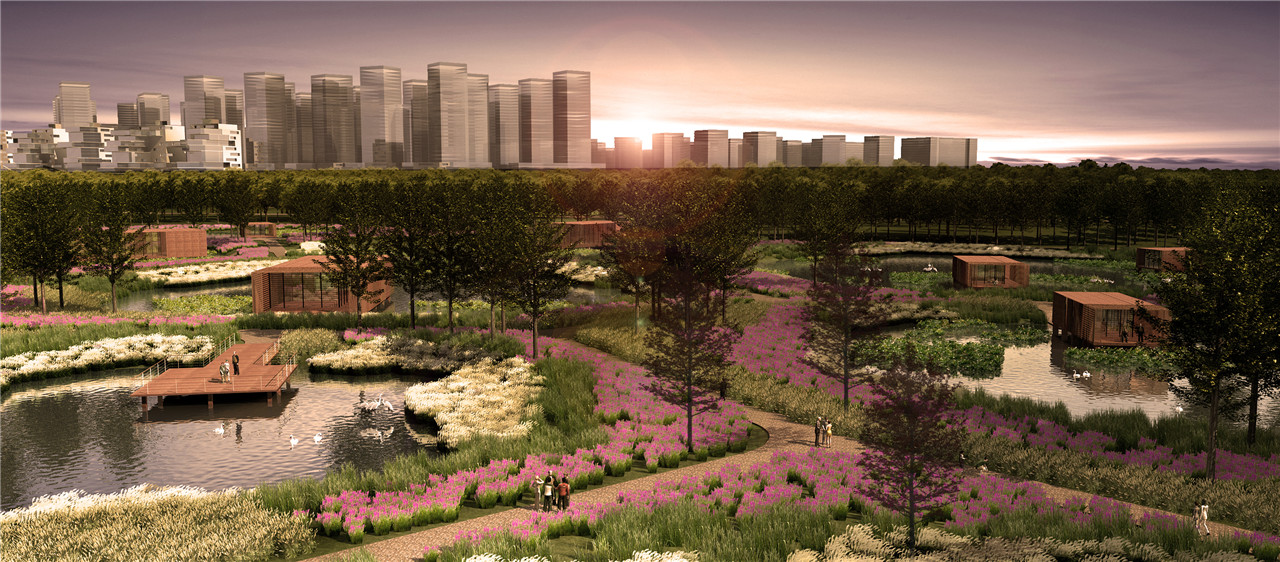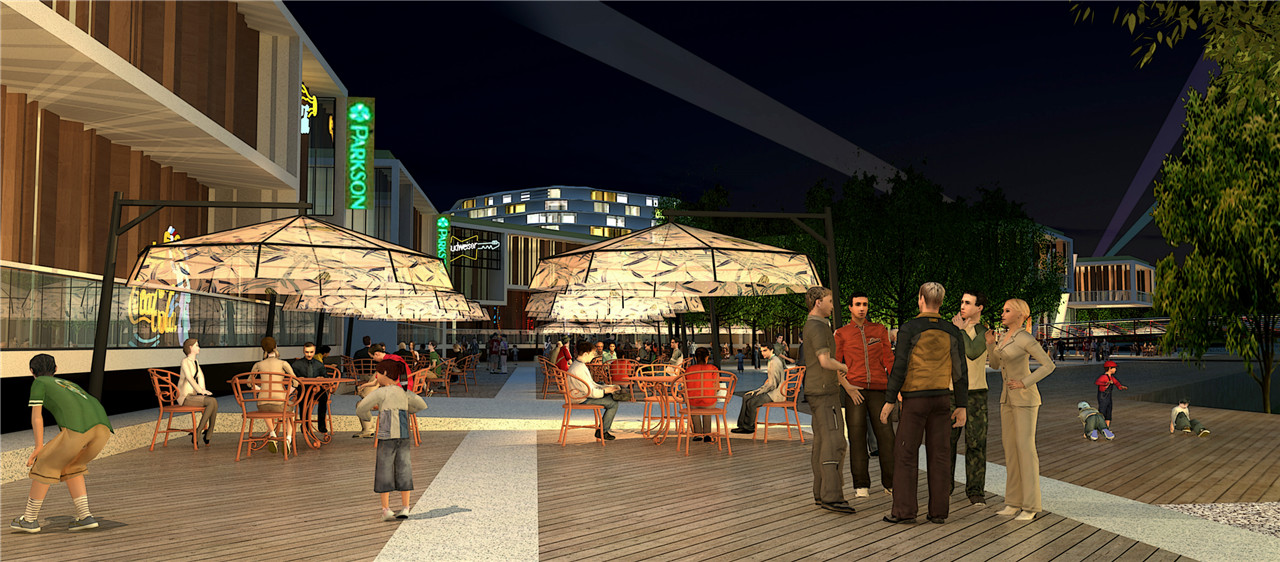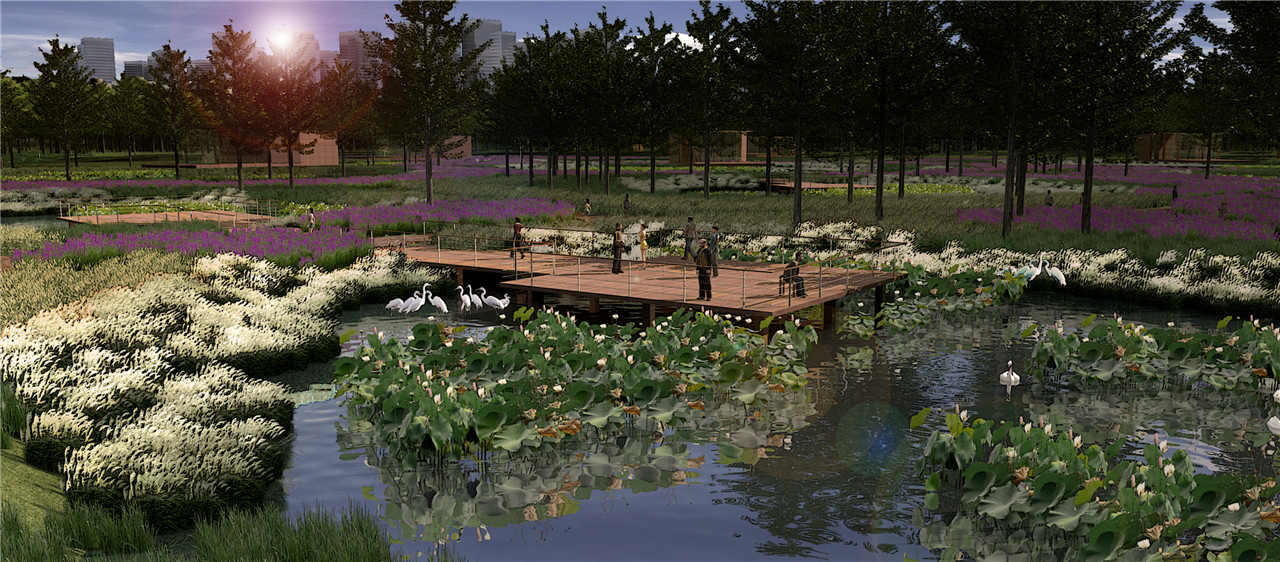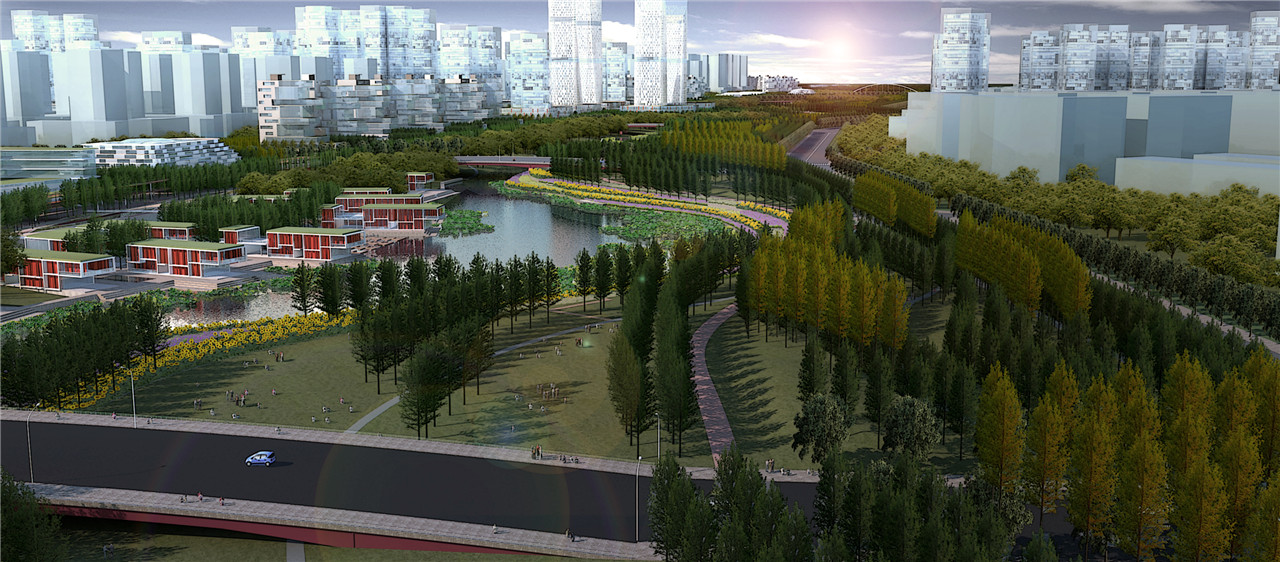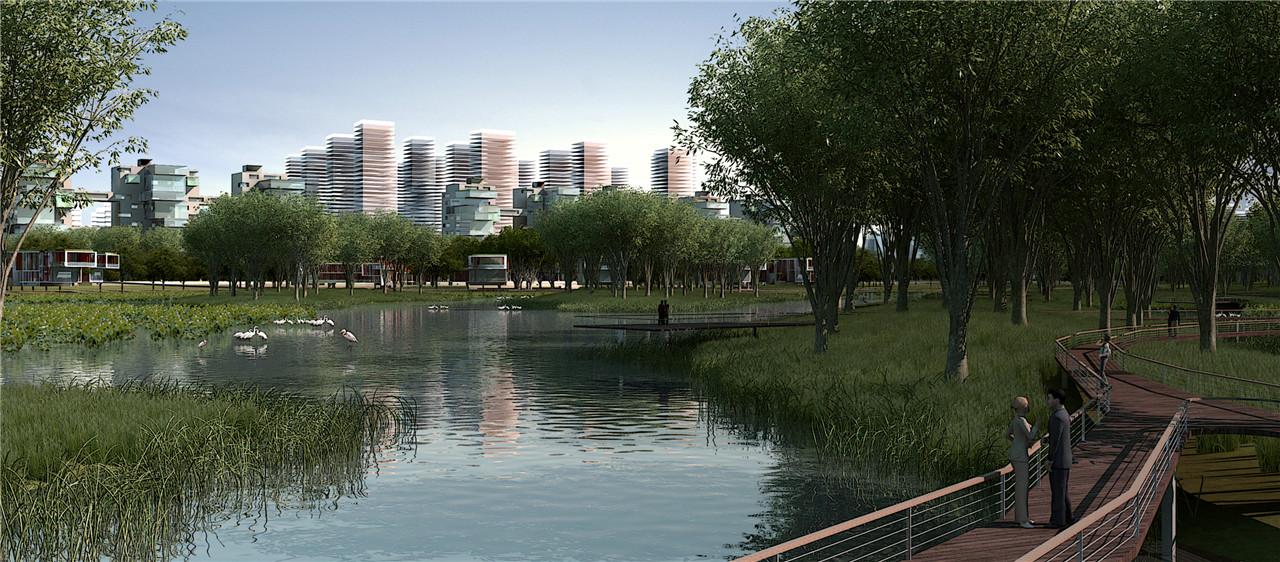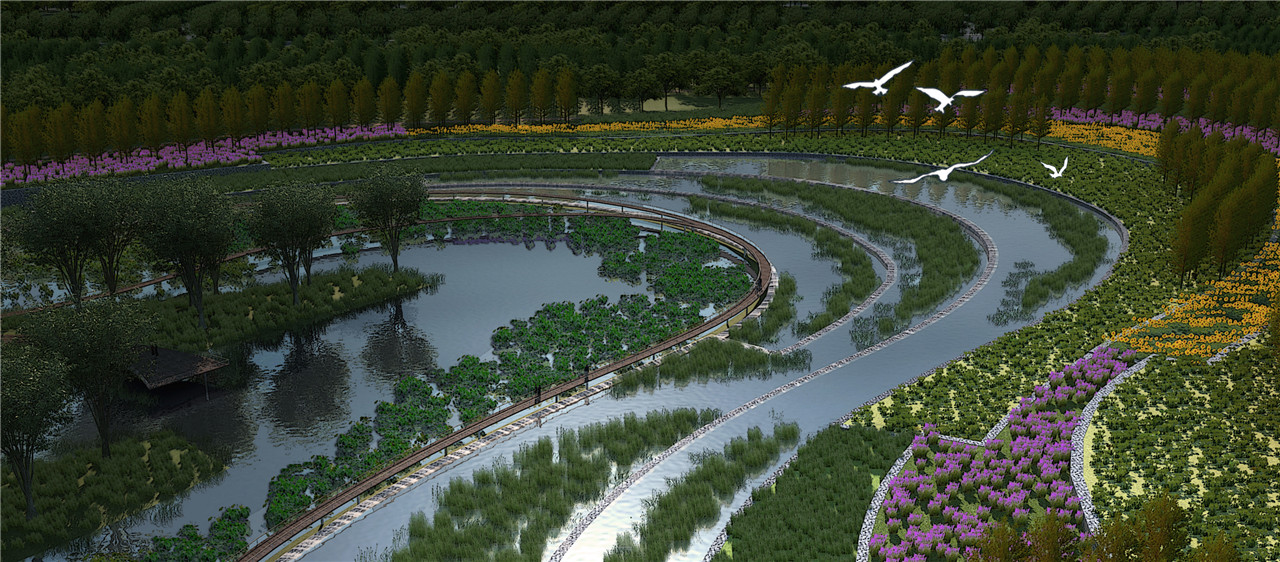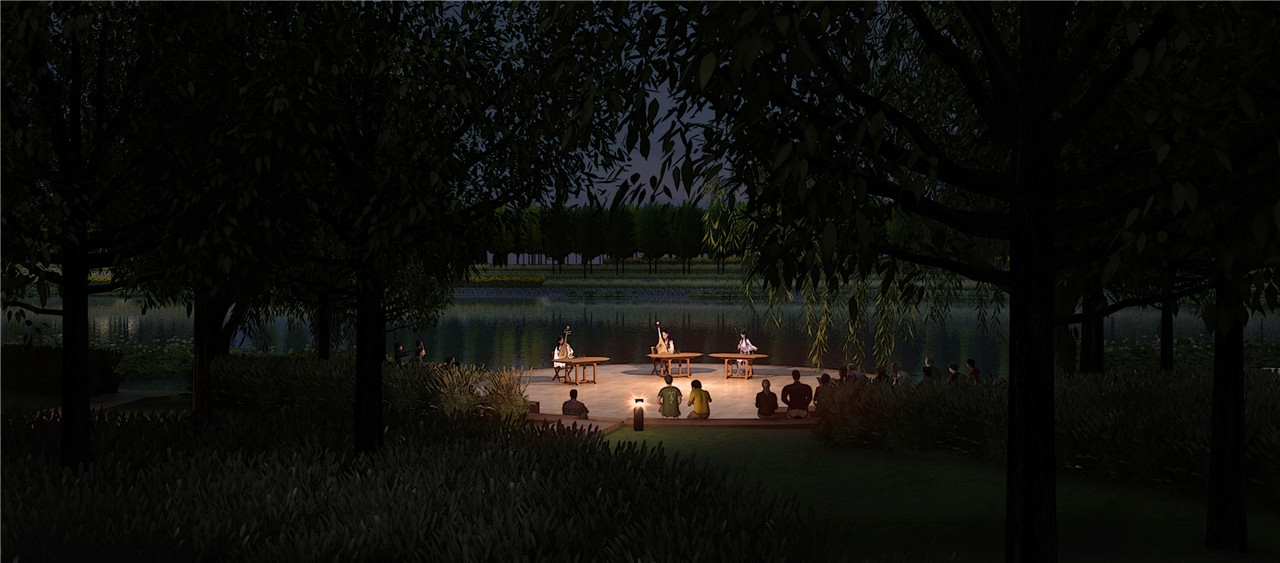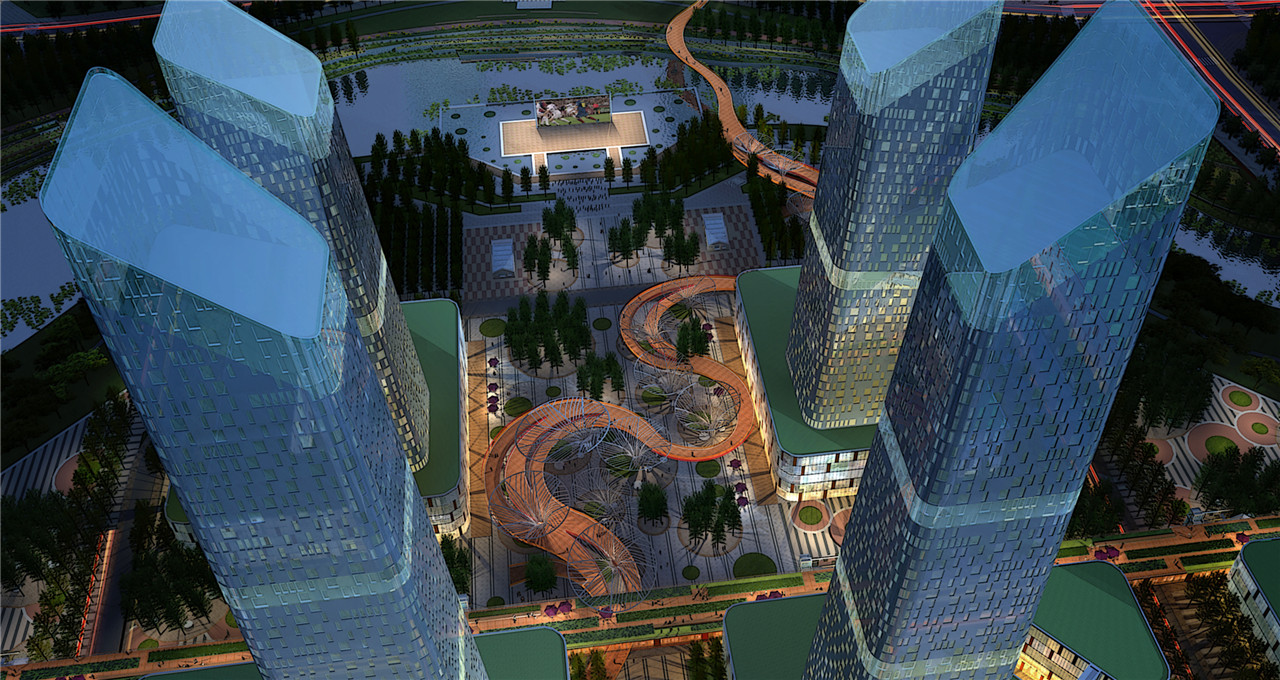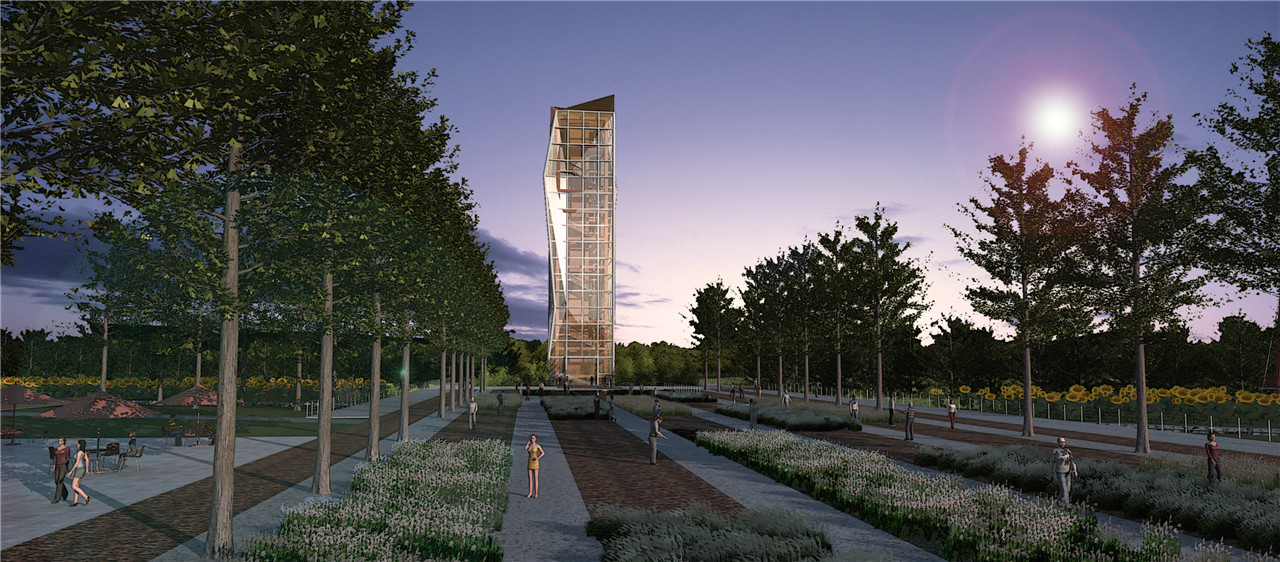Beijing Bohai Rim High-Level Headquarter Base Urban Landscape
Project Information
- Project Location:
- China Beijing
- Project Scale:
- 5.74 Square Kilometers
- Design Time:
- August 2011
- Client:
- Beijing Xinghu Investment Development Company
Project Profile
1. Project Statement
The Beijing Bohai Rim High-Level Headquarters Base is located in the southwest of Tongzhou New City, Beijing, with a study area of 17.21 square kilometers. The upper-level planning positions this area as a high-end headquarters base facing the Bohai Rim metropolitan area. As an important functional component of Tongzhou New City, this area shoulders the significant role of promoting regional (economic) cooperation. Aligning with the overall functional positioning of the headquarters base, we designate the central landscape belt as a regional ecological corridor and central leisure park, serving as a urban green engine driving the comprehensive development of the region. Addressing the three major challenges of ecological services, urban vitality, and cultural integration faced by the site, this proposal introduces the core concept of "Urban Green Valley," emphasizing the convergence of human flow, ecological flow, and information flow in the central valley, thereby stimulating the development of the entire high-end headquarters base.
2. Objective and Challenge
Challenge One: Ecological Services — Continuing the site's high-quality ecosystem service functions.
How to ensure the continuity and safety of water, and how to preserve and enhance the local landscape memory while reshaping the landscape network are the primary challenges facing this project.
Challenge Two: Urban Vitality — Shaping vibrant public spaces.
From an urban functional perspective, the service function positioning and spatial layout become the second major challenge facing the planning.
Challenge Three: Cultural Integration — Achieving the integration of "Lotus Culture" and "Elite Culture."
The city is like a cultural melting pot. How to make the "Lotus Culture" rooted in the site's local culture and the "Elite Culture" accompanying urban globalization compatible and mutually beneficial through landscape design is a key difficulty in this planning and design.
3. Design Strategy
Strategy One: Canal Network and Tree-lined Paths — Continued use of existing high-quality forest and water networks.
Existing controlling plans have neglected canals and forests to some extent, which has undermined the site's characteristics. The planning should reintroduce these landscape elements and endow them with new urban functions to sustainably utilize high-quality resources. Establishing a complete regional green space system using canals and forests can further enhance the central landscape water system's status in the region, enhancing its ecological and recreational value.
Strategy Two: Ecological "Lotus Sea" — Ensuring the continuity and ecological safety of water bodies.
The entire water system design is based on four major issues: water continuity, water purification, flood safety, and rainwater utilization. The water system is divided into three major river sections: upstream purification wetlands, midstream landscape water systems, and downstream flood control wetlands, with "Lotus Bay - Lotus Sea - Lotus Pond" as the cultural theme to create a continuous, clean, safe, and efficient ecological water system.
Strategy Three: Urban "Balcony" — Enhancing land value and providing a stage for urban vitality.
"Urban Balcony" can be understood as the interface where the city extends to nature. Here, people can experience the freshest air and brightest sunlight, engage in various activities, and cleverly connect the rigid city with the flexible nature through this interface.
Strategy Four: Layered Gardens Harmony — Respect for and experience of local landscape.
North of the water system is an active commercial leisure interface dominated by buildings, serving as a rigid urban "balcony." Conversely, the other side of the water system is designed as a flexible boundary with vegetation and terraced slopes, creating a "Layered Gardens Harmony" urban leisure sports space.
4.Conclusion
Based on a thorough analysis of the background and current resources of the Beijing Tongzhou Bohai Rim High-end Headquarters Base project, the planning summarizes the three major challenges faced by the site. Under the leadership of the "Urban Green Valley" design concept, through the four design strategies of Canal Network and Tree-lined Paths, Ecological "Lotus Sea," Urban "Balcony," and Layered Gardens Harmony, specific landscape planning layouts are proposed. This exploration has been beneficial for the ecological sustainable development, construction, and landscape feature creation model of the high-end new city in the traditional agricultural landscape area of the southern suburbs of Beijing.
